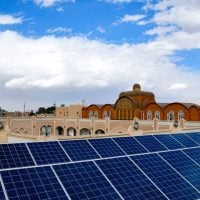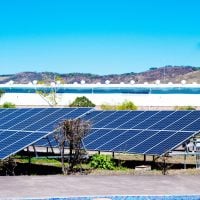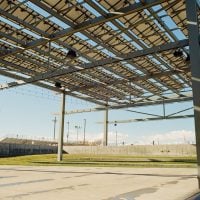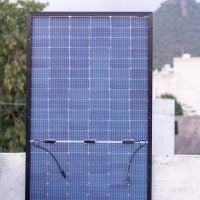Solar electrification has emerged as a beacon of hope for millions across Africa, where access to reliable electricity remains a significant challenge. With over 600 million people lacking access to electricity, the continent faces a pressing need for sustainable energy solutions. Solar energy, abundant and renewable, offers a viable pathway to bridge this gap.
The potential for solar electrification is immense, not only in providing power for homes but also in driving economic growth, improving education, and enhancing healthcare services. As the world increasingly recognizes the urgency of climate change, solar energy stands out as a clean alternative that can help mitigate environmental impacts while fostering development. The transition to solar electrification is not merely about installing solar panels; it involves creating an ecosystem that supports energy access, affordability, and sustainability.
This requires collaboration among various stakeholders, including governments, non-governmental organizations (NGOs), private sector players, and local communities. By harnessing the power of the sun, Africa can leapfrog traditional energy infrastructure and move towards a more sustainable future. The journey towards solar electrification is complex but filled with opportunities that can transform lives and communities across the continent. Are You Working on Solar Innovation or Clean Energy Access? Join us to receive updates.
The Impact of Donors on Solar Electrification
Donors play a pivotal role in advancing solar electrification initiatives across Africa. Their financial support is crucial for funding projects that would otherwise be unfeasible due to high upfront costs. By providing grants, loans, and technical assistance, donors enable NGOs and local organizations to implement solar solutions that cater to the unique needs of communities.
This funding not only helps in the installation of solar systems but also supports capacity building and training programs that empower local populations to maintain and operate these systems effectively. Moreover, donors often facilitate partnerships between various stakeholders, fostering collaboration that enhances the impact of solar electrification projects. For instance, by connecting NGOs with private sector companies, donors can help leverage additional resources and expertise.
This collaborative approach ensures that projects are not only financially viable but also sustainable in the long term. The influence of donors extends beyond financial contributions; they also play a critical role in shaping policies and advocating for regulatory frameworks that support renewable energy initiatives.
The Top 30 Donors Driving Solar Electrification
A diverse array of donors is actively contributing to solar electrification efforts in Africa. Among them are international organizations, government agencies, philanthropic foundations, and private sector investors. Notable contributors include the World Bank, which has invested heavily in renewable energy projects across the continent, and the African Development Bank, which focuses on financing sustainable energy initiatives.
Additionally, organizations like the United Nations Development Programme (UNDP) provide technical assistance and capacity-building support to enhance project implementation. Philanthropic foundations such as the Bill & Melinda Gates Foundation and the Rockefeller Foundation have also made significant investments in solar electrification projects. Their focus on innovative financing models and social impact investing has catalyzed numerous initiatives aimed at improving energy access for underserved populations.
Furthermore, private sector players like SolarCity and SunPower are increasingly entering the African market, bringing with them technological expertise and investment capital that can accelerate the deployment of solar solutions.
The Role of Government and Non-Governmental Organizations in Solar Electrification
Governments play a crucial role in creating an enabling environment for solar electrification through policy formulation and regulatory frameworks. By establishing supportive policies, such as feed-in tariffs and tax incentives for renewable energy investments, governments can attract private sector participation and stimulate market growth. Additionally, public sector investments in infrastructure development can complement donor funding and enhance the overall effectiveness of solar electrification initiatives.
Non-governmental organizations (NGOs) are equally vital in driving solar electrification efforts on the ground. They often serve as intermediaries between communities and donors, ensuring that projects are tailored to local needs and contexts. NGOs engage in community outreach and education programs to raise awareness about the benefits of solar energy while also providing training for local technicians to maintain solar systems.
Their grassroots approach fosters community ownership of projects, which is essential for long-term sustainability.
Challenges and Opportunities in Solar Electrification Across Africa
Despite the promising potential of solar electrification in Africa, several challenges hinder its widespread adoption. One significant barrier is the high initial cost of solar technology, which can be prohibitive for low-income households. Additionally, limited access to financing options further exacerbates this issue, as many communities lack the necessary credit history or collateral to secure loans for solar installations.
Furthermore, inadequate infrastructure in rural areas can complicate logistics and increase project costs. However, these challenges also present opportunities for innovation and growth. The rise of pay-as-you-go (PAYG) models has made solar technology more accessible by allowing users to pay for systems incrementally rather than upfront.
This approach has gained traction in several African countries, enabling households to benefit from solar energy without incurring significant debt. Moreover, advancements in battery storage technology are enhancing the reliability of solar systems, making them a more attractive option for communities with intermittent electricity supply.
Case Studies of Successful Solar Electrification Projects
Several successful case studies illustrate the transformative impact of solar electrification across Africa. One notable example is the Solar Sister initiative in Uganda, which empowers women entrepreneurs to distribute solar products in their communities. By combining clean energy access with women’s economic empowerment, Solar Sister has not only improved energy access but also created jobs and enhanced livelihoods.
Another inspiring project is the Barefoot College in India, which trains women from rural African communities to become solar engineers. This initiative has led to the establishment of solar microgrids in several countries, providing electricity to remote villages while fostering local capacity building. These case studies highlight how targeted interventions can create sustainable solutions that address both energy access and social equity.
The Importance of Sustainable and Affordable Energy Solutions
Sustainable and affordable energy solutions are critical for achieving broader development goals in Africa. Access to reliable electricity can significantly improve quality of life by enabling better healthcare services, enhancing educational opportunities, and fostering economic growth. For instance, schools equipped with solar power can extend their hours of operation and provide students with access to digital learning resources.
Similarly, healthcare facilities can utilize solar energy to power essential medical equipment and refrigeration for vaccines. Moreover, sustainable energy solutions contribute to environmental conservation by reducing reliance on fossil fuels and minimizing greenhouse gas emissions. As countries strive to meet their climate commitments under international agreements like the Paris Accord, investing in renewable energy sources like solar becomes increasingly important.
By prioritizing sustainability in energy planning, African nations can create resilient economies that thrive while protecting their natural resources.
The Potential for Economic and Social Development through Solar Electrification
The potential for economic and social development through solar electrification is vast. Access to electricity can stimulate local economies by enabling small businesses to operate more efficiently and expand their services. For example, entrepreneurs can use solar power to run refrigeration units for perishable goods or operate machinery for agricultural processing.
This not only creates jobs but also enhances food security by reducing post-harvest losses. Socially, solar electrification can empower communities by providing them with greater control over their energy resources. When communities invest in their own solar solutions, they gain independence from unreliable grid systems or expensive diesel generators.
This empowerment fosters a sense of ownership and responsibility towards maintaining these systems while also encouraging community engagement in decision-making processes related to energy use.
The Future of Solar Electrification in Africa
The future of solar electrification in Africa looks promising as technological advancements continue to drive down costs and improve efficiency. Innovations such as smart grids and decentralized energy systems are paving the way for more resilient energy solutions that can adapt to local needs. Furthermore, increased investment from both public and private sectors is expected to accelerate the deployment of solar technologies across the continent.
As awareness of climate change grows, there is also a heightened focus on integrating renewable energy into national development plans. Many African countries are setting ambitious targets for renewable energy generation as part of their commitments to sustainable development goals (SDGs). This shift towards cleaner energy sources presents an opportunity for Africa to position itself as a leader in renewable energy innovation on a global scale.
The Role of Innovation and Technology in Advancing Solar Electrification
Innovation and technology are at the forefront of advancing solar electrification efforts across Africa. The emergence of new financing models such as crowdfunding platforms allows individuals and organizations to invest directly in solar projects that resonate with them. Additionally, mobile technology is facilitating access to information about available solar products and services, empowering consumers to make informed choices.
Moreover, advancements in battery storage technology are revolutionizing how solar energy is utilized. Improved storage solutions enable households to store excess energy generated during sunny days for use during nighttime or cloudy periods. This capability enhances the reliability of solar systems and makes them a more attractive option for communities previously reliant on erratic grid power or expensive fossil fuels.
The Importance of Continued Support for Solar Electrification
In conclusion, continued support for solar electrification initiatives is essential for unlocking Africa’s potential for sustainable development. As millions still lack access to reliable electricity, it is imperative that stakeholders—including governments, donors, NGOs, and private sector actors—collaborate effectively to create an enabling environment for renewable energy solutions. By investing in innovative technologies and financing models while prioritizing community engagement, we can ensure that solar electrification becomes a reality for all Africans.
The journey towards universal energy access through solar electrification is not without its challenges; however, the opportunities it presents are transformative. By harnessing the power of the sun, Africa can pave the way towards a brighter future—one where clean energy fuels economic growth, social equity thrives, and environmental sustainability is prioritized. As we look ahead, it is crucial that we remain committed to supporting these initiatives so that every individual has access to affordable and sustainable energy solutions that empower them to reach their full potential.
In the context of the “Top 30 Donors Driving Solar Electrification Across Africa,” it’s essential to consider the broader implications of energy efficiency and environmental sustainability. A related article that delves into these themes is the call for proposals on “Tradeoffs between Process Optimization, Greenhouse Gas Mitigation, and Energy Efficiency.” This article explores the delicate balance between optimizing industrial processes and achieving significant reductions in greenhouse gas emissions, which is crucial for sustainable development in Africa. For more insights, you can read the full article here.









































